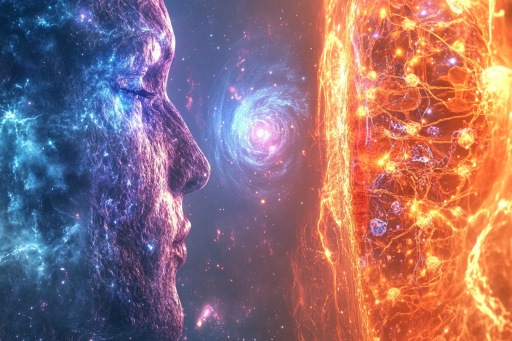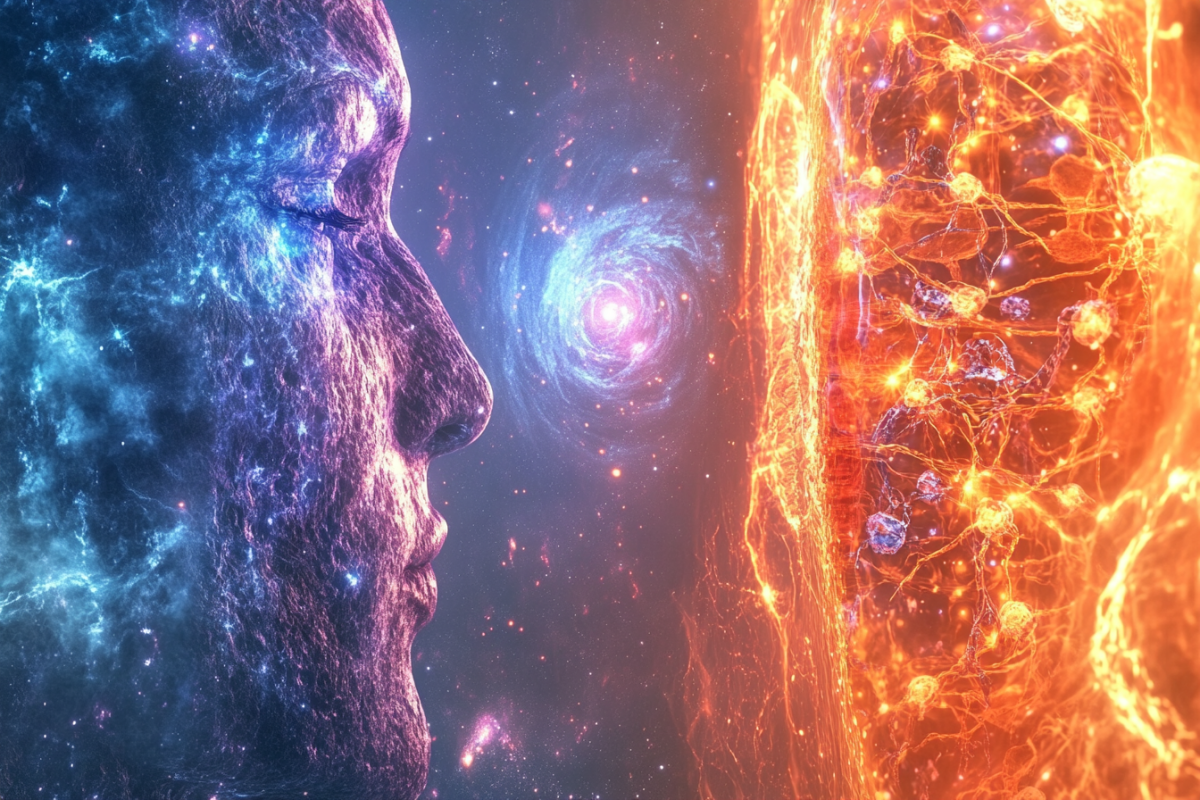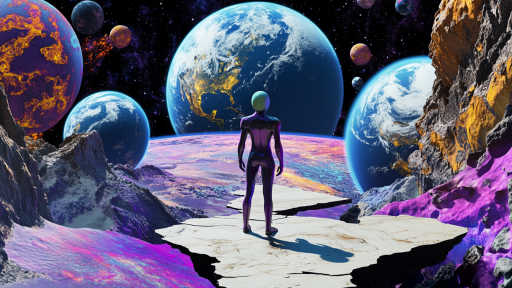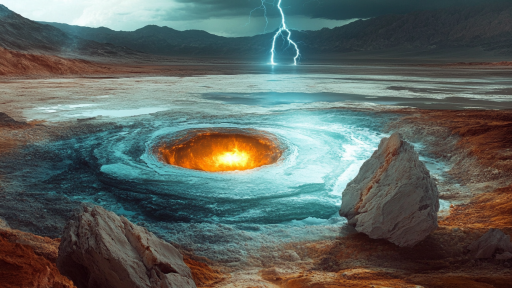
The human body and the universe seem like two vastly different things—one is a microscopic system of cells and organs, while the other is an unfathomably vast expanse of galaxies and cosmic forces. Yet, the deeper we look, the more eerie similarities we find between the two. From patterns in our eyes that mimic nebulae to the strange way our atoms mirror the composition of the cosmos, the universe may be far more connected to us than we ever imagined. Could this all be a coincidence, or is there something deeper linking us to the stars?
The Universe and the Human Brain Look Strangely Alike

If you compare an image of neurons in the human brain with a cosmic web of galaxies, the resemblance is uncanny. Both feature networks of filaments connecting clusters—one forming thoughts, the other shaping the universe. Despite the staggering difference in scale, both structures rely on complex, interconnected systems to function. It raises the question: are our minds and the cosmos built from the same fundamental blueprint?
The Elements in Your Body Are the Same as the Stars

Every atom in your body was once part of an ancient star that exploded in a supernova billions of years ago. Oxygen, carbon, calcium, and iron—the very things that keep you alive—were forged in the fiery cores of distant suns. In a way, you are not just living in the universe; you are a piece of it, made from the same cosmic ingredients. As astronomer Carl Sagan famously said, “We are made of star stuff.”
The Golden Ratio Appears in Both Galaxies and Human Features

The golden ratio, a mathematical proportion found in nature, also appears in the spirals of galaxies and the structure of the human face. Many believe this ratio contributes to beauty and harmony in both art and biology. The same sequence that dictates the graceful swirls of a hurricane may also determine the proportions of your DNA helix. Is this number a mere mathematical curiosity, or does it reveal a hidden order in the universe?
The Number of Atoms in a Human Body Mirrors the Stars in the Observable Universe

The estimated number of atoms in an average human body is roughly the same as the number of stars in the observable universe—about 10¹⁴ (100 trillion). This mind-boggling coincidence suggests a strange symmetry between the smallest and largest scales of existence. Could this numerical parallel be a sign that life and the cosmos are intrinsically linked?
The Eye’s Retina Looks Like a Distant Nebula

Side-by-side images of the human retina and certain deep-space nebulae reveal an eerie resemblance. The swirling, branching structures of nerves in the eye mirror the glowing tendrils of gas and dust in space. Just as nebulae serve as nurseries for new stars, the retina transforms light into signals that give birth to vision. Perhaps the universe and human perception are more connected than we realize.
Heartbeats and Pulsars Follow Similar Rhythms

Pulsars—rapidly spinning neutron stars—emit beams of electromagnetic radiation at steady intervals, almost like the ticking of a cosmic clock. Strangely, the human heart also beats in a rhythmic pulse, guided by electrical signals. Both follow precise timing patterns that, if disrupted, can lead to chaos. Is it just chance, or does the universe have its own kind of heartbeat?
The Spiral Pattern of DNA Matches Cosmic Spirals

The double-helix shape of DNA—the blueprint for all life—bears a striking resemblance to the spirals of galaxies. From the Milky Way to hurricane formations, the spiral seems to be a fundamental structure in nature. Could this shape hold a deeper universal meaning, linking the microscopic to the cosmic?
Human Bioluminescence Echoes the Glow of Stars

Humans actually glow—we just can’t see it with the naked eye. Scientists have discovered that our bodies emit tiny amounts of visible light, particularly in the face, due to metabolic reactions. While faint, this glow connects us to the vast radiance of the cosmos, where stars shine across infinite space. In a way, we are all dim stars walking the Earth.
Your Body’s Water Matches the Composition of the Ocean

The salinity of human blood and bodily fluids closely matches that of the early ocean. This chemical similarity suggests that life may have originated from the sea, carrying its essence within us as we evolved. Just as Earth’s tides are pulled by the moon, our own bodies are affected by the same cosmic forces. Are we simply walking extensions of the planet itself?
Are We the Universe, or Is It Us?

From the vast swirls of galaxies to the microscopic structures within us, the universe and the human body share far more than we ever imagined. These strange coincidences blur the line between the cosmos and ourselves, making us question whether we are separate from the universe—or just another expression of it. If the same patterns and elements repeat at every scale, perhaps we are more connected to the stars than we ever dreamed.





